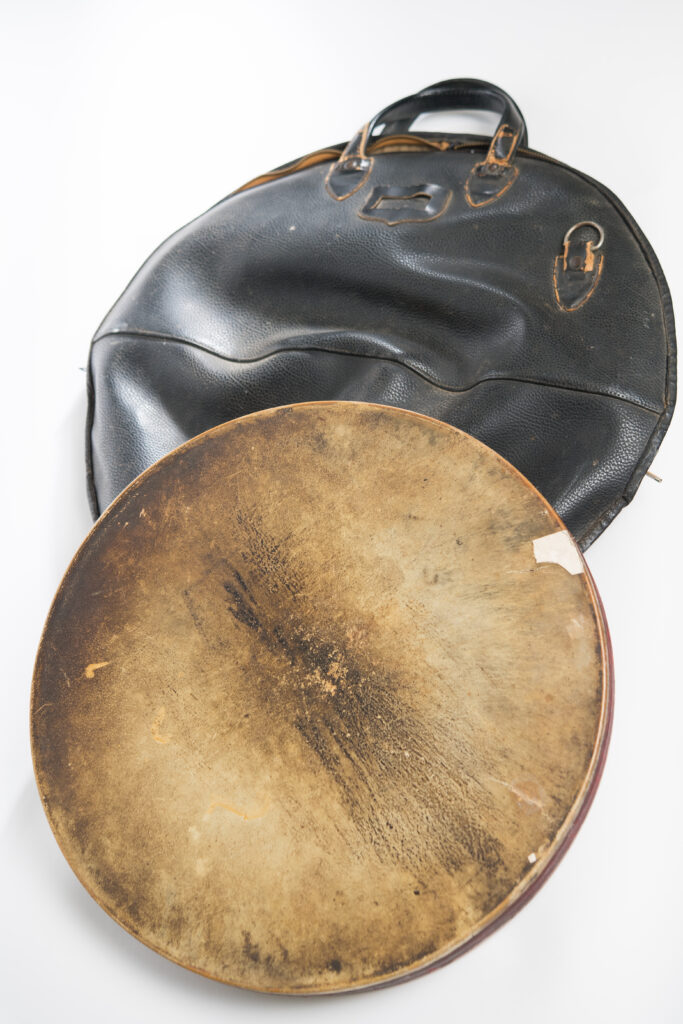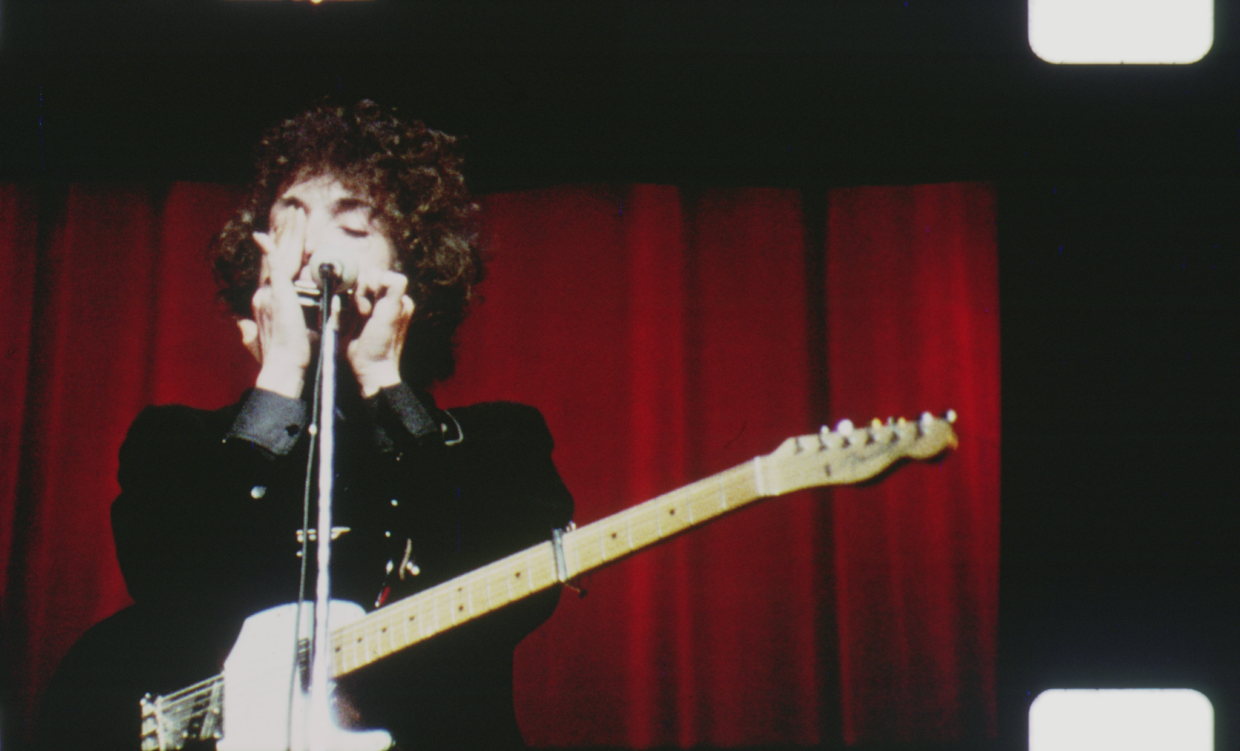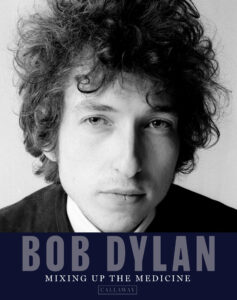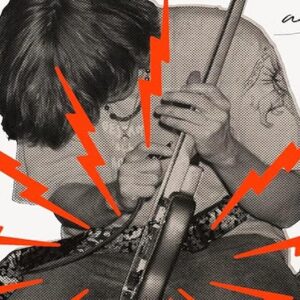Featured image: Bob Dylan, Gramercy Park, NYC, 1963. Photograph by Ralph Baxter.
It’s a small black imitation-leather dimestore notebook, about the size of a cell phone, like an address book or a day planner or a diary, but a bit more vague. “A Daily Reminder of Important Matters,” it says on the title page, and the inner pages are ruled. The calendar up front is for 1963, although the book seems to have been used in 1964. Its spine has been repaired, crookedly, with packing tape. Clusters of addresses and references suggest its owner might have been in Mississippi, New Orleans, Texas, Los Angeles, Paris, London, and San Francisco during the term of its use. It is about three-quarters filled, with spurts and sequences of writing appearing in various sizes and permutations of the owner’s script, inscribed with different implements and with varying observance of the ruling and the page orientation. It was written on the move, in short bursts, on trains and airplanes and in hotel rooms and the backs of cars.
I was drawn to the book because I’m more inclined to be a detective than a literary scholar. I liked the fact that it was a three-dimensional object that got carried around in a pocket and collected all kinds of stray marginal items in addition to bits of songs caught on the fly. And I liked it, too, because of its place in the chronology. It documents the time when Dylan was turning away from the expectations of the folk-protest crowd. He was writing pop songs, although he was employing the free-associative methods and collage use of the folk-lyric that had marked his work since the beginning. (He was writing pop songs back then, too, although “Baby, I’m in the Mood for You” and “Tomorrow Is a Long Time,” for example, waited decades before being officially released.) Dylan was reinventing himself yet again, as his circumstances changed and the Western world experienced a wildcat surge of creativity and release from social constraints. Dylan was becoming a star in an arena that stretched far beyond the world of coffeehouses and folklore centers. At the very same time, the Beatles appeared out of nowhere on television, launching a thousand ships. Muhammad Ali knocked out Sonny Liston; the New York World’s Fair was on; Pop Art dominated the art world. It was the year of Dr. Strangelove and Band of Outsiders, of Goldfinger and The Naked Kiss. It was the moment of a brash new contract between high and low.
 Bruce Langhorne’s tambourine, the inspiration for Bob Dylan’s song “Mr. Tambourine Man.” Courtesy of the Bob Dylan Center.
Bruce Langhorne’s tambourine, the inspiration for Bob Dylan’s song “Mr. Tambourine Man.” Courtesy of the Bob Dylan Center.
The 1964 notebook begins with a verse:
On the banks
of leaf river on
route 11
from Meridian
high roads
According to Clinton Heylin’s dogged Bob Dylan: A Life in Stolen Moments (1996), the author was indeed in Meridian, Mississippi, on February 9, 1964, and he traveled on by way of New Orleans, Dallas, and Denver to San Francisco and Los Angeles. In May he was off to London, Paris, and Berlin for a month. On these trips he met people, and their phone numbers and such accrue here and there along the course of the notebook. There’s Lenny Bruce (“OL7 4384 / 8825 Hollywood Boulevard”); Nico, then a model, two years before the Velvet Underground (“TRO 7746 / 69 rue de la Pompe”); Mason Hoffenberg, hangout artist and co-author of Candy; Al Aronowitz, the journalist who introduced Dylan to the Beatles that summer (when Dylan introduced the Beatles to cannabis); the English folk singer Martin Carthy; the San Francisco music critic Ralph J. Gleason; and City Lights Books, which had Dylan signed up to write a chapbook for their Pocket Poets series—a book that, many years and several publishers later, appeared as Tarantula.
The first thing in the notebook to catch my eye seemed to be a sort of Top Ten list:
0. lonely American
1. Zacherie song
2. Beach Boys (T bird)
3. Sally’s a Good ol gal
4. Send you back t Georgia
5. Dusty Springfield
6. Tommy Tucker
7. Bed Bugs X
8. Major Lance (2)
9. Lonely Avenue
10. Isley Bros (Twist an Shout)
And it does turn out to be a playlist, of mostly then-current pop, country, and R&B. “Zacherie sing” might refer to the Draculaesque New York television host John Zacherley, who put out an array of 45s around then, such as “Eighty-Two Tombstones” and “I Was a Teenage Caveman”; “Bed Bugs X” might be his jab at the Beatles (Don Adams, later the star of Get Smart, appeared then in a television skit as manager of the singing group the Bedbugs, perhaps on The Jimmy Dean Show). The others are, in order: the Beach Boys’ “Fun Fun Fun” (1964); Hank Cochran’s “Sally Was a Good Old Girl” (1962); Timmy Shaw’s “Gonna Send You Back to Georgia” (1962); most likely Dusty Springfield’s “I Only Want to Be With You” (1963); Tommy Tucker’s “Hi-Heel Sneakers” (1964); most likely Major Lance’s “The Monkey Time” (1963, written by Curtis Mayfield) and “Um, Um, Um, Um, Um, Um” (1964); Ray Charles’s “Lonely Avenue” (1956, written by Doc Pomus); and the Isley Brothers’ “Twist and Shout” (1963). At first glance the genres are all over the map, from the Beach Boys’ apple-cheeked blend of Chuck Berry and the Four Preps to Timmy Shaw’s uncompromisingly specific gutbucket R&B, and from Dusty Springfield’s Mod London wall-of-sound anthem of joy to Ray Charles’s noir-tinged call-and-response shuffle. But that was the very time when Black and white pop musics were just beginning to sound more like each other, and Dylan was clearly setting out to explore that field of intersection. All of the songs are absolutely sincere; all of them are tough; all of them pack bright hooks in their choruses; you could do the Frug to pretty much every one; you could imagine Dylan covering all of them (except maybe “I Only Want to Be With You”), maybe at Big Pink with the Hawks.
Dylan was reinventing himself yet again, as his circumstances changed and the Western world experienced a wildcat surge of creativity and release from social constraints.And then the songs begin to emerge. Lines and riffs accrue and intersect and combine, take solid form, wait for words and phrases to fall into the empty slots. Sometimes a song will arrive as an airmail delivery—if not exactly whole then at least balanced on three legs and unlikely to tip over. Thus when three lines appear, “Maybe it’s the color of the sun cut flat / An floatin / perhaps it’s the weather or something like that,” you hear the song immediately. Dylan is within striking distance of
Perhaps it’s the color of the sun cut flat
An’ cov’rin’ the crossroads I’m standing at
Or maybe it’s the weather or something like that
But mama, you been on my mind
And then he spends a few pages worrying at the rest of the verses. “When you wake up in the mornin’, baby, look inside your mirror,” from the fifth verse, is given three varied initial stabs, and “you just been on my mind” appears in a cloud of attempts: “You aint been on my breath / nor thought”; “you’re in my dreams [that word crossed out] but then again [that phrase crossed out] you’re not.” He presumably worked out the rest on a typewriter, but in any case “Mama, You Been on My Mind” was recorded on June 9 and first performed in public on August 8 at Forest Hills Stadium in New York. And then he inexplicably omitted it from Another Side of Bob Dylan.
Within a page of the foregoing, three words sit by themselves: “go away from.” Once again that is the only prompt the inner jukebox requires. If you are aged and scholarly you might possibly hear John Jacob Niles’s keening “Go ‘Way From My Window,” but more likely you will at once be treated to the entirety of “It Ain’t Me, Babe.” Those words are followed by “A crimson skyline / climbs it’s throne,” which might be a first go at “My Back Pages” (“Crimson flames tied through my ears”), but it isn’t developed. A dozen pages later, though, he picks up the original scent:
You say you are looking
for someone strong
it aint
Please go away from my window baby
you’ll only in time turn around
without using vulgar words
Please go from my doorway
You’ll only be let down
You say you are looking
for someone who stands strong
To protect you or defend you
Constantly thru right or wrong
Which requires only minor tweaking before it can become
Go ’way from my window
Leave at your own chosen speed
I’m not the one you want, babe
I’m not the one you need
You say you’re looking for someone
Never weak but always strong
To protect you an’ defend you
Whether you are right or wrong
 Bob Dylan in performance, Europe, 1966. Film still from 1966 European Tour footage, by D. A. Pennebaker. Courtesy of The Bob Dylan Center.
Bob Dylan in performance, Europe, 1966. Film still from 1966 European Tour footage, by D. A. Pennebaker. Courtesy of The Bob Dylan Center.
He knows he has hit a jackpot (one of many, to be sure), and he celebrates the occasion by following the draft verse above with a bit of doggerel:
Instead of following the rule
of going to school
I used to sit on the stool
with drool
An on the seventh day
I sat down
an said
“oh let me write a song”
An the song was wrote
It is
He first performed “It Ain’t Me, Babe” on July 24 at the Newport Folk Festival.
A second, similar notebook from about a year later in 1965 collects all kinds of stray bits of verse and a single diaryish item: “I once said to the German press that i called the music tractor music and one of them said ‘oh you mean working class music.’” It is impossible to read that or the verse fragments without hearing them in Dylan’s voice, from “cigarette ashes they cover the grass / the street it smells of broken glass” to “20 zebras with riders each wearing” to “Bodyguard is on the floor his head is in the pail.” Now and then a song will seem like it’s lurking right around the corner:
An death doesn’t exist
not owning but moaning
not moaning but mourning
not morning but evening
not evening but ?
What might be an early glimmer of “Like a Rolling Stone” (or “She’s Your Lover Now”) puts in an appearance:
She’s been raised in the castle yet her
mind’s in the gutter, she borrows
people’s heads promising tomorrow
she’s convinced every body except herself
But then the songs do start coming. All by itself appears “She aint no woman / she’s a man,” which will eventually become the chorus of the fragmentary “Jet Pilot.” (Also on this page is reference to Bob Kaufman, San Francisco poet and the first African American member of the Beat crowd.) A few pages later a quatrain ends with the line “death will not come, it’s not poison” and then a three-line sequence goes “see themselves in the funnel swallow their pride / life is hard / they do not die, it’s not poison.” Two lines further: “worthless knowledge.” A bit further still: “I wish I could write you a melody so plain / that would [illegible] you dear lady that would consel your pain / for [something blacked out] useless knowledge.” And so Dylan has in hand two bits from what will become “Tombstone Blues”:
Now the medicine man comes and he shuffles inside
He walks with a swagger and he says to the bride
“Stop all this weeping, swallow your pride
You will not die, it’s not poison”
and
Now I wish I could write you a melody so plain
That could hold you dear lady from going insane
That could ease you and cool you and cease the pain
Of your useless and pointless knowledge
In the middle of all this appears a trio of lines—“my sinful mama, you know she moves / like a mountain lion / she’s a junkyard princess”—that suggest both “From a Buick 6” and “Lunatic Princess Revisited.”
Watching the process as you turn the pages is like seeing a photograph slowly materialize in the developing bath, or maybe a statue freeing itself from the marble block. The two notebooks serve up Bob Dylan live and in color in various hectic portions of 1964 and 1965. You see him in cars, in bars, in airports and gas stations and people’s porches and living rooms, maybe with his shades on, smoking cigarettes, meeting interesting people, hearing the radio in the car or the kitchen, turning words and phrases loose from the accumulation in his subconscious and letting them fly around until they find a thermal and float home. The experience is as good as a movie.
__________________________________

“A Daily Reminder of Important Matters” by Lucy Sante is excerpted from Bob Dylan: Mixing Up the Medicine, written and edited by Mark Davidson and Parker Fishel, published by Callaway Arts & Entertainment.


